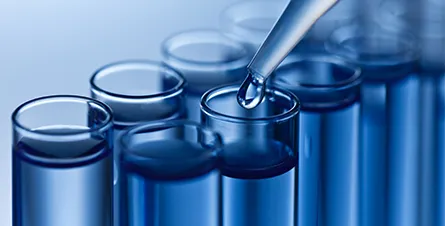How Utilities are Successfully Shifting Clean Up Costs to Polluters
2.21.23
Utilities that detect toxic chemicals such as PFAS in their drinking water or wastewater source have to decide on the best possible solution for treating the water and paying for the costs of cleanup. Luckily, because so many systems are facing this issue, there is precedence for how to cover the costs.
Utilities that tackle water contamination directly are often the most successful and ultimately benefit the affected community. Water and wastewater systems are increasingly choosing to pursue legal action to hold polluters – not ratepayers – accountable for the cleanup costs. Below we share what to expect if you decide to hold polluters accountable for the cost of cleanup.
Paying for the cost of clean up
Many of the threats posed to public drinking water and wastewater today arise from the use of defective commercial products near surface and groundwater sources, or from consumer products that release harmful chemicals into the system through everyday use. A growing number of systems across the US are filing lawsuits against the manufacturers of defective products – and winning. This means corporate polluters are being held responsible for their actions and for the cost of treatment.
Litigation process
Because litigation can sound intimidating and complex, it is helpful to know what is involved and what to expect when filing a lawsuit against a toxic chemical polluter. It is also helpful to rely on a law firm with extensive water contamination litigation experience, as they will likely be best equipped to navigate the process and lessen the amount of time and resources your team will need to allocate to the case.
Below is a snapshot of the steps a water contamination firm would take on behalf of a water utility:

- Investigation - After contaminants are detected in a drinking water or wastewater system, the legal team will help in identifying the probable source and begin preliminary factual research.
- Filing the lawsuit and initial disclosures - Once the legal team has identified one or more defendant(s), a complaint is filed on behalf of the utility. The legal team and the utility collaborate to find and provide evidence.
- Fact discovery - Both sides are able to access information in their opponent’s possession. Requests to turn over documents and provide information are common.
- Mediation - As progress is made in the case, accused polluters may be willing to settle instead of going to trial. The legal team will help decide on an appropriate sum in the case of settlement.
- Expert discovery - The legal team conducts additional research. This may include consulting specialists to provide expert analysis.
- Settlement or trial - Once evidence has been exchanged the parties may either decide to settle or go to trial.
Taking action
Understanding how to shift the costs of treatment to corporate polluters is a critical component of dealing with water contamination. Gathering as much information as possible will help you make the best decision for your utility and for your community members when the time comes for you to act. Now that you have initial information about litigation strategies for PFAS, you may be wondering: what next?
SL Environmental Law Group, a firm with extensive water litigation experience against large corporations, offers free consultations and works on a contingency basis. Thanks to our decades of experience, we can help you weigh options, understand how regulations may impact your water system, identify potential sources of contamination, compare treatment options, and provide guidance regardless of your decision to file a lawsuit.
Set up your confidential and complimentary consultation:



